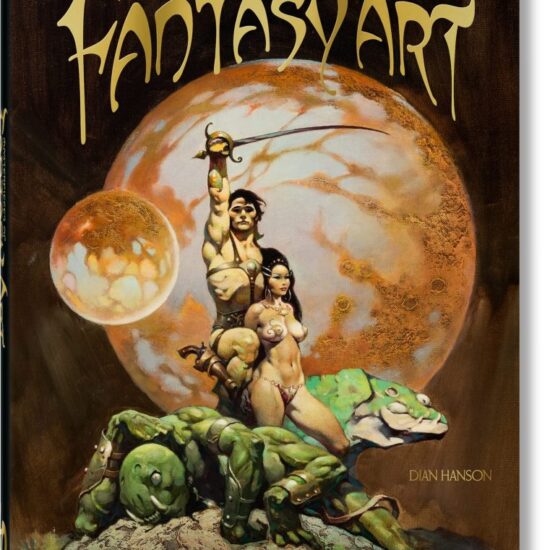
From the wah-wah guitar that opens the title track to the operatic closer “Just to Keep You Satisfied,” Marvin Gaye’s 1973 album “Let’s Get It On” expressed the joy — and complexity — of human sexuality like virtually none in popular music before it. To commemorate the 50th anniversary of its release, Motown/ UMe is holding an event Wednesday featuring fellow R&B luminaries Smokey Robinson and Jimmy Jam, Gaye biographer David Ritz and moderated by UMe A&R vice president Harry Weinger, in advance of a new deluxe edition of the album. The retrospective set, due out digitally Friday (and on red vinyl in October), features 20 alternate, previously unreleased tracks from the legendary recording sessions.
This isn’t the first expanded edition of the classic album, but the team behind it feels like it deserved a fresh look into what the archives held. Weinger, who produced the original “Let’s Get It On: Deluxe Edition” back in 2001, tells Variety that more than just the occasion of its 50th birthday prompted him to revisit the album. “Frankly, I never liked the mixes that I did on the deluxe version back in the day,” he says. “I don’t think I did anything ‘wrong’… but there were quite a few of the tracks from the various sessions that I had picked at that I didn’t use that were completely valid as their own releases.”
As Weinger returned to “Let’s Get It On,” he began to uncover more material from the Motown archives. With advice from experts like Ritz and Dr. Andy Flory, author of the Motown book “I Hear a Symphony,” he discovered that a focus on the first six months of 1973, when Gaye had moved to Los Angeles, supported more specific musical endeavors than he’d previously realized.
“I drew a timeline,” says Weinger. “What did he do? How did he do it? What songs were recorded? What songs were left behind? And before I knew it, we had a, I wouldn’t say very different, but we had a bigger story than I thought.”
After “What’s Going On” became an iconoclastic smash for Motown in 1971, when the label was struggling to reconcile the divide between its crowd-pleasing chart-toppers and the irrepressible sociopolitical realities of the time period, Gaye plunged into the recording of not one but two albums. When the first, the 1972 follow-up “You’re The Man,” was shelved by Motown, Gaye pivoted to the soundtrack to the blaxploitation film “Trouble Man,” one of only two albums in his career to be recorded under his full creative control (the other was his 1981 album “In Our Lifetime”). Yet throughout this time, he was also recording lyrics and developing instrumentals that would pave the way for “Let’s Get It On,” evidencing its supple musicality as well as its bracing carnality.
Credit: Jim Britt/Motown Records Archives
Motown has released an incredible wealth of previously unheard music from Gaye in the almost four decades since he passed away, including “You’re The Man” in 2019 as a cohesive, self-contained album after including tracks from those sessions on various re-releases or compilations. Aiming to chronicle Gaye’s creative process amidst Motown’s factorylike production of instrumentals for its stable of stars, Weinger selected recordings that showcased the singer-songwriter’s direct involvement, even if they likely were never intended for public consumption.
“There’s a track where there’s a partial vocal, ‘Song #4’,” he says. “Throughout, Marvin was probably singing off-tune on purpose, like, ‘Don’t ever use this.’ [But] we used pieces of it to just let people know that Marvin is in the room. There are, for plenty of Motown artists, tracks that are intended for that person, but they were not anywhere near it. In this case, Marvin was there, and that’s why you hear studio chatter and slight vocal asides.”
The result of these efforts is a more holistic portrait of the conception and assembly of “Let’s Get It On” than on the 2001 deluxe edition, as well as a curated collection of alternate versions of its iconic songs for fans to listen to and luxuriate in. “You begin to really fall for the alternates,” Weinger says. On an alternate mix of “Please Stay (Once You Go Away),” for example, Gaye’s soulful pleading begins without musical accompaniment; an alternate of “Come Get to This,” meanwhile, eliminates the tom drum keeping time in the album version.
“You’re going to hear these alternates as a thrilling ride into someone’s creative consciousness, or unconsciousness,” says Weinger. “And then to be able to then connect the dots and still go, ‘I’m hearing A and B, but I don’t know how he got to C.’ It’s unbelievable — the mark of a genius.”
The final 15 tracks on the deluxe edition not only include several never-before-heard instrumentals (featuring performances by Herbie Hancock and Richard Bennett alongside legendary session musicians Paul Humphrey and James Jamerson), but 1973 arrangements of songs from Gaye’s album “Vulnerable,” a collection of ballads that was officially released in 1997. Listeners who know that particular posthumous release can for the first time hear the songs in the appropriate context in which they were recorded — simultaneously stretching the boundaries of soul music with his yearning, sensuous work for “Let’s Get It On” while at the same time exercising a longtime ambition to be “the Black Frank Sinatra.”
Fifty years later, the overall story of the slow-jam masterpiece has become Motown boilerplate and the stuff of larger pop music history. But as undeniably as Marvin Gaye took listeners to a then-unprecedented, downright sexy destination, Weinger hopes that this new edition will shed new light on the journey, and the work, that it took to get there. “The original album is brilliant, it’s a masterpiece, the biggest record of the year for Motown, and the biggest Marvin Gaye record up to that point,” says Weinger. “It’s sex, it’s love, it’s God, it’s whatever you want to call it. But within it, how did he get there?
“It was just an exploration to say, ‘can we do better by Marvin and the family?’” Weinger says. “I didn’t want to have a deluxe edition where you listen a couple of times and you go, ‘That’s nice.’ I wanted people to be able to go, ‘Holy shit’.”














